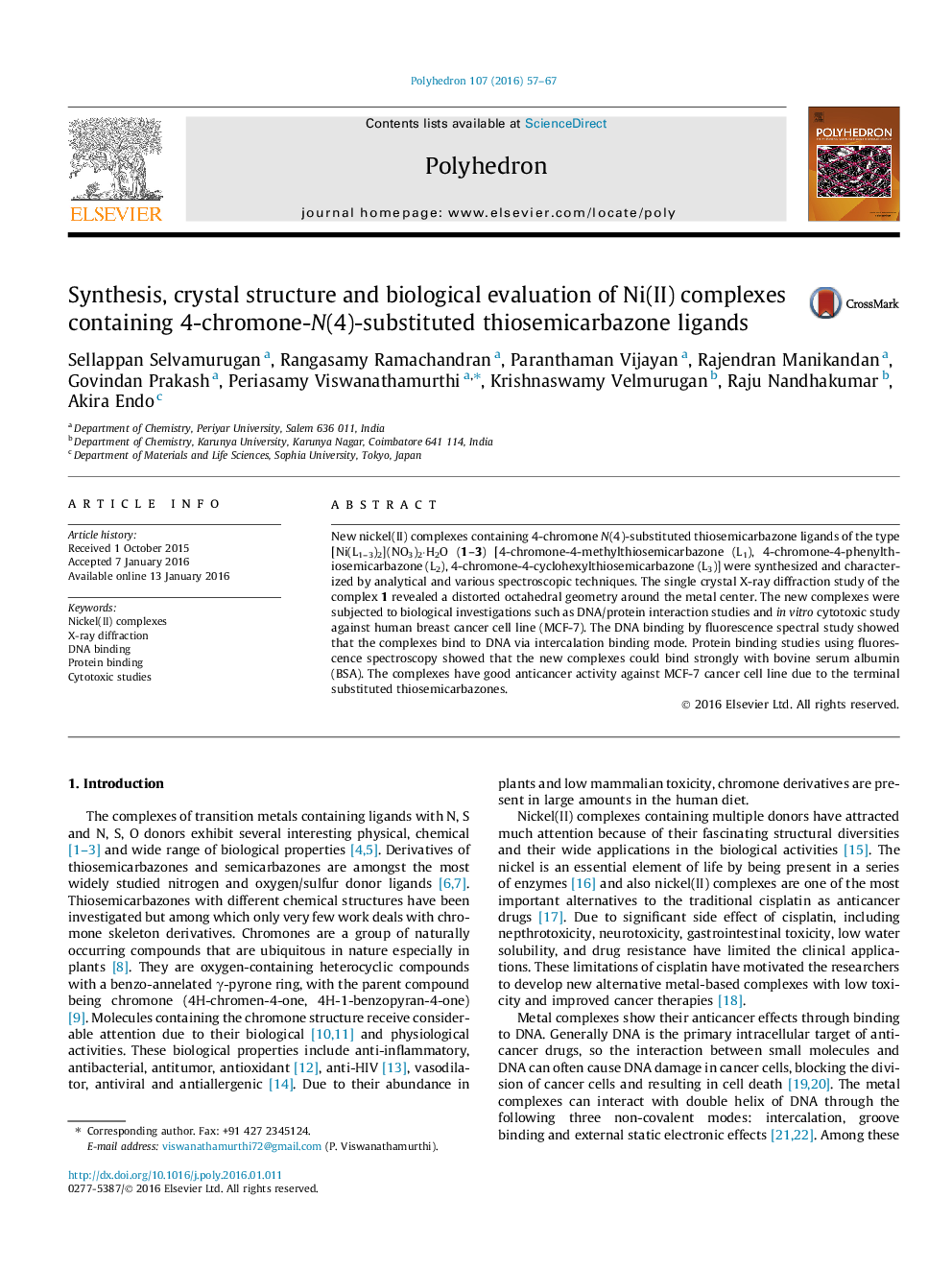| Article ID | Journal | Published Year | Pages | File Type |
|---|---|---|---|---|
| 1335690 | Polyhedron | 2016 | 11 Pages |
New nickel(II) complexes containing 4-chromone N(4)-substituted thiosemicarbazone ligands of the type [Ni(L1–3)2](NO3)2·H2O (1–3) [4-chromone-4-methylthiosemicarbazone (L1), 4-chromone-4-phenylthiosemicarbazone (L2), 4-chromone-4-cyclohexylthiosemicarbazone (L3)] were synthesized and characterized by analytical and various spectroscopic techniques. The single crystal X-ray diffraction study of the complex 1 revealed a distorted octahedral geometry around the metal center. The new complexes were subjected to biological investigations such as DNA/protein interaction studies and in vitro cytotoxic study against human breast cancer cell line (MCF-7). The DNA binding by fluorescence spectral study showed that the complexes bind to DNA via intercalation binding mode. Protein binding studies using fluorescence spectroscopy showed that the new complexes could bind strongly with bovine serum albumin (BSA). The complexes have good anticancer activity against MCF-7 cancer cell line due to the terminal substituted thiosemicarbazones.
Graphical abstractNew nickel(II) complexes containing 4-chromone N(4)-substituted thiosemicarbazone ligands have been synthesized and characterized. The structure of one of the complexes (1) has been confirmed by single crystal X-ray diffraction study. DNA/protein binding studies were carried out to understand the binding mode and binding ability of the complexes. The capability of complexes to destroy the cancer cells were studied using MTT assay method.Figure optionsDownload full-size imageDownload as PowerPoint slide
